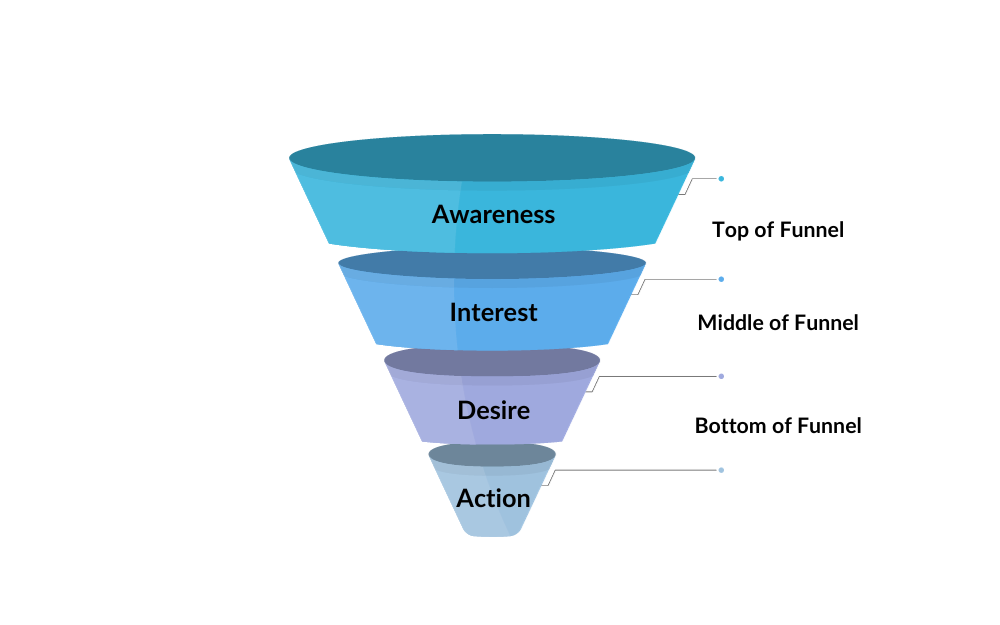The more Search Engine Optimization (SEO) evolves, the more it — somewhat — stays the same. How can we say that? Well, the more new and (some might say) “flashy” aspects of the SEO world that are introduced to the search community, the more the basics and foundational tactics need to be paid attention to.
One of those foundational pieces of SEO is content. The saying “Content is King” is a proven mantra, however, the more Google doubles down on content, the more it rings true.
Writing content, while also taking into account the intent behind the keywords, is no easy feat. However, once your feet are wet from experience, you’ll want to dig deeper into the adjacent themes that are tethered to SEO-focused content, which include aligning keyword intent, including user experience, content formatting and structure, the importance of internal linking, acknowledging traffic and impressions come first.
Read on as our SEO Team touches on each of those topics below…

Katherine, SEO and Email Strategist
Aligning Keyword Intent with Content
We’ve gone over the types of keyword intent in a previous blog post explaining what search intent is and the types of intent (informational, navigational, commercial, and transactional); however, what does the intention of the keyword mean to content, and how does that transform into user search intent? Let’s not get ahead of ourselves.
Before digging into it, here’s a refresher look at the marketing funnel:

So, now that you have the marketing funnel in your mind, you can assign:
- Blogs to Top of Funnel (ToF) and more informational keywords
- Gated content pages to Middle of Funnel (MoF) and more informational/commercial keywords
- Service/Category/Product pages to Bottom of Funnel (BoF) and more transactional/commercial keywords
Though this is not a hard and fast rule, thinking of your content and keywords in this way can help with identifying your intent and creating accordingly. For even more content types and where they fit, read up on this Orbit Media blog post.
Now that that’s out of the way, let’s dig in further.
When Keyword Intent & User Intent are Misaligned
Say you are an eCommerce brand that has a blog on your website explaining your industry (ToF), but you are driving to very transactional keywords (BoF) due to a salesperson needing to acquire more leads (read: sales). A user who happens upon the blog who was searching for transactional keywords and was looking for more in-depth and rich content that led to an action is likely going to be a bit miffed when those keywords they were using were incorporated in a very general blog.
Likewise, let’s say you are a B2B brand that has a very intentional and detailed landing page full of niche content for the purpose of receiving leads to a particular business unit (BoF)… but you have more generic, more informational keywords that keep driving very Top of Funnel users to the page. Those users will have a poor (or poorer than expected) user experience due to the wires being crossed between keyword intent not matching the content and the user intent within the marketing funnel.
Putting in the Intent Research
So, what can be done to mitigate circumstances like the two displayed here?
In both scenarios, you can reduce the likelihood of an intent mismatch by researching and understanding:
- The initial keyword intent
- The user or type of users you are targeting for the specific piece of content
- The purpose of the content and how will it benefit the end user
- How the content will be used
- Will it be added to an email campaign?
- Will it be posted as an internal linking opportunity through a Paid Search landing page?
- Will it be blasted out to thousands of people on Organic Social Media platforms?
What’s great about infusing all of those aforementioned aspects into content is that if the keyword intent aligns with the purpose, tone, and goal of the content, then the user experience will be a positive one.

Brittany, Senior SEO Strategist
How Content Affects User Experience
Your website’s content is more than just the copy on the pages. Images, video, and other elements are also considered content, and these can affect how users see and interact with your website. All these items can contribute to your credibility, as well as your site’s navigation, overall aesthetic, and search engine optimization (SEO).
Plus, when sites prioritize content, these efforts can encourage increased traffic and engagement. Your site’s content can impact whether users circulate content from your site and whether they inquire or purchase with your organization. Therefore, it’s important to prioritize the content on all versions (mobile, desktop, tablet) of your site.
When crafting copy, there are a handful of things to take into account…
First, consider intent: users explore the Internet to find answers to their queries or questions. It’s important to always write with your audience in mind and include thoughtful personal experiences as well as carefully researched information. Google’s Documentation offers insightful guidelines to keep you accountable as you work to produce quality content.
Next, prioritize proper grammar, punctuation, and spelling. Headings, subheadings, and bulleted lists also help to make your content easy to read. In addition, think about what you want users to accomplish after reading this copy. This is where calls to action come in, such as purchasing exclusive products, scheduling appointments, or subscribing to newsletters.
Finally, if you have not already included visual elements to complement your copy, consider images, infographics, and videos, all of which can provide additional context to paragraphs, promote awareness to your business, and boost users’ experience. Be sure these elements are sized appropriately, as they may negatively impact site speed and overall experience.

Steve, SEO Strategy Lead
The Importance of Proper Content Formatting and Structure
When looking to rank higher in Google and other search engines, websites need to have content that is relevant, engaging, and will drive a positive user experience. You also need to ensure the page is structured so the HTML is friendly to Google.
Below are a few proper tips for structuring your HTML content for SEO.
User & SEO-Friendly Title Tags
One of the most important on-page SEO factors is the site’s title tag. Therefore, it’s important to have keyword-centric title tags, while at the same time keeping them friendly for users. While there is no official recommended title tag length from Google, the search engine generally shows 55-60 characters of a title tag in the search engine’s results page (SERP). If your page’s meta title has more characters, it will get cut off in the SERP and possibly completely rewritten by Google.
While making sure title tags are keyword focused, they should also be user focused, as the title tag can have a heavy impact on clickthrough rate.
Proper H1
Another important SEO ranking factor is a page’s </H1> tag. The H1 is normally the headline and most prominent text on the page, and should feature a page’s primary keyword. Also, a page should also only have one H1 — so make sure to audit your site periodically to make sure that’s not an issue anywhere.
H2s and other Heading Hierarchy
Say you write a 2,000 word blog. You don’t just want to have 2,000 words of paragraph copy below the H1. It’s best to break up your content into different headings. This helps the user navigate the blog more effectively — and helps Google understand it better as well.
Below is a definition of the structure of heading tags:
- H1: What the blog post or landing page is about
- H2: Subheading — the main points or sections of the article or landing page
- H3: A subsection of the H2 that goes into further detail about what the page is about. Can be a bulleted list.
- H4: Clarifies the H3 even further.
The following is an example of how this can be instituted. Let’s say you’re writing a blog post about the best restaurants in Chicago.
H1: Best restaurants in chicago
H2: Best Italian restaurants in Chicago
H3: Italian Restaurant A
H3: Italian Restaurant B
H2: Best Mexican restaurants in Chicago
H3: Mexican Restaurant A
H3: Mexican Restaurant B

Sean, SEO Team Lead
Properly Adding Internal Links to Your Content
While crafting your content based around the user’s intent, also think about related content that either currently lives on your website or you are planning to create to internally link to. The methods of including internal links throughout your website can vary. Naturally, there will be your main navigation, but you can and should include links within your page content by utilizing descriptive anchor text.
This entire article is using Internal Linking (And External) throughout to improve our own SEO efforts!
Making sure your content and website is constructed with internal links in mind is crucial to the overall success of your website and SEO strategy. Listed below are a few reasons why.
Establishes Site Hierarchy and Structure
Internal links contribute to the organization and hierarchy of your website after a proper URL Structure is established. They define the structure of your content for crawlers, indicating which pages are more important or relevant. This can have a positive impact on search engine rankings, as search engines use site structure to understand the context and importance of each page.
Distributes Page Authority
Internal links help distribute page authority and “link juice” across your website. By linking from high-authority pages to other relevant pages, you can boost the SEO value of those linked-to pages, helping them rank higher in search engine results.
Promotes Content Relevance
Internal links help establish thematic relevance between different pages. When you link related content, it signals to search engines that your site is an authoritative source on a particular topic, potentially improving your site’s visibility for relevant search queries.
Enhances User Experience (UX)
Alongside creative web design, good internal links help users navigate your website seamlessly, providing them with additional relevant content and resources. This improves the overall user experience by making it easier for visitors to find information and stay engaged on your site.
Improves Engagement
By guiding users to other relevant pages within your site, internal links can reduce Bounce Rates (an old metric from Universal Analytics) and increase Engaged Sessions (a new metric from GA4). When visitors find valuable and helpful content and continue exploring, it signals to search engines that your content is engaging and satisfies user intent. Internal links can also be a part of your overall Conversion Rate Optimization strategy as well!
Supports Keyword Optimization
Strategic use of anchor text in internal links allows you to optimize for specific keywords. This can positively impact the relevance of linked pages for targeted keywords, contributing to possible increases in engagement and improved search engine rankings.
Improves SEO and Page Ranking
Search engines use internal links to discover and index new content on your site. When search engine crawlers find links, they follow them to index and understand the relationship between different pages. This is especially important for large websites with tons of content.
Having a strong internal linking strategy is a fundamental aspect of on-site SEO that positively influences user experience, site structure, and search engine rankings. It’s an essential practice for website owners and content creators looking to maximize the visibility and effectiveness of their online content.

Natasha, SEO Content Strategist
Why Impressions and Traffic Come First and Conversions Come Second
Content marketing is more than a creative tactic for your business. The most strategic content plans are data-driven, driving qualified traffic and leads to your site. It means evaluating market metrics, selecting the right keywords based on monthly search volume and keyword difficulty, working with call centers or sales teams to understand what questions people have that need to be answered, and then putting everything together into an ideal content plan. This process doesn’t always lead to immediate results but will, in time, generate great ROI for your organization.
A critical component in the process, after the plan has been made and high-quality content has been created, is measuring the results. This involves monitoring impressions and clicks to the site page or blog post. These impressions and clicks reveal to your marketing experts which of your target keywords resonated with users, which keywords the piece generated that you didn’t expect, and where you may still need to improve the piece.
Once the traffic begins coming to the site, you can really start to study user behavior through heat mapping and analytics reports. These tools and tactics show marketing experts how users interact with the page, where they came from when they landed on the page, and where they go next. From this information, your SEO content team can start to — effectively and efficiently — optimize your content to weed out irrelevant traffic, drive more qualified leads to the page, and create an even better customer journey based on these insights.
So while conversions are the end goal, whether they take place on that particular content piece or move users to the appropriate page where they can convert, there’s an important process that must be followed to effectively execute an optimal content marketing plan.

Kelsey, SEO Team Manager
Building Trust with Your Audience Through Content
Content is one of the easiest and most effective ways to build trust with your audience. Your goal should be to provide users with high value information without any gimmicks, understanding that this will have a much better long-term payoff than low quality “sales-y” content. If you do this effectively, you will be more likely to convert your audience and create a long lasting relationship with them.
Understand your audience and speak to them directly
In order to gain trust, you must prove to users that you see them and understand them. A quick way to do this is by directly addressing their pain points, day-to-day frustrations, and goals. When you understand and address the common roadblocks your users face, you begin to build rapport with them. From there, you can start walking them through various solutions, knowing they will be more receptive once you have laid the groundwork of addressing them directly.
Be Authentic & Transparent
Building trust requires getting personal. Be transparent with your audience about your opinions and observations, and lean into your personal experiences heavily. Our personal experiences are what gives us authority, and users want to hear unique perspectives! Steer clear of giving vague and generalized recommendations — anyone can pull these together after skimming a few articles. Instead, be authentic. Give users your honest thoughts and recommendations, then back it up with examples and reasonings.
Additional elements that showcase trustworthiness in content
Once you have proven to your audience that you understand them, you must also prove that you can be trusted to give accurate and useful information on the subject matter. Including the following elements can quickly display how you are a dependable source:
- Detailed author bios. Bios should show users why an author has authority on that specific topic by including a synopsis of their personal experiences with the subject, links to relevant publications or webinars the author has published, and links to work overview pages (such as a LinkedIn profile or a company profile).
- Reviews and ratings. Pulling in ratings and review widgets is very easy for most CMS platforms, and is a great way to show users that your customers trust you.
Link out to high quality resources. Some marketers may fear providing links to other websites, worrying that leading traffic away from their site could be harmful. However, providing users with strong and relevant resources, even if they are outside of your own domain, tells users, “The main goal of our content is to provide you with valuable information.”
What Does All Of This Mean?
Content, then, is not only King, but is one of the main driving forces behind much of what those in SEO strive to gain understanding of. By incorporating and practicing the aforementioned SEO exercises and tactics, and as the SEO Team at Logical, we continue to evolve, understand, and identify how content can further improve and enhance any website searcher’s experience.








